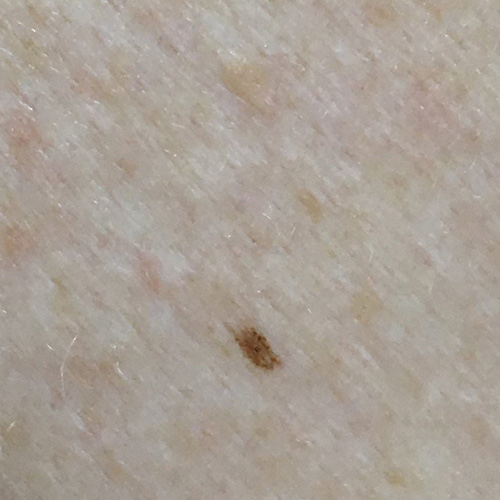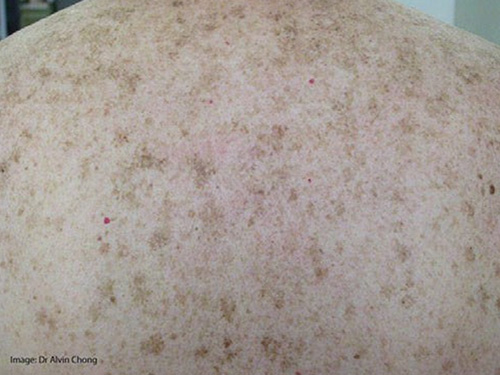Lentigines
Lentigines (commonly known as ‘freckles’) are pigmented flat lesions with a defined edge. Lentigines can be categorised based on appearance, location and cause.
If a patient has an asymmetrical, atypical, or persistent lesion, in an area of sun damage, consider lentigo maligna. If a patient has numerous lesions, this may indicate severe sun damage; consider possibility of skin cancers. Additionally, if the patient has multiple or eruptive lentigines, specialist referral is recommended for consideration of genetic syndromes.
Lentigo simplex commonly presents in childhood, but can occur at any age from early childhood to adulthood. It usually presents as a brown-to-black small (flat) macule that is less than 5 mm in diameter. They can be mistaken as junctional naevi (see Melanocytic naevi). Macules can occur anywhere on the skin (in both sun-protected and sun-exposed areas), although they are less common on the mucosa (eg lips, inside the mouth, vulva). Lentigo simplex is not caused by solar damage. Treatment is not required, other than for cosmetic reasons. Pigment laser therapy is used—refer to a dermatologist. See Lentigo simplex for photos of lentigo simplex.

Photo sourced with permission from Dr Michelle McRae.

Photo sourced with permission from Dr Michelle McRae.
Solar lentigines (commonly known as ‘sunburn freckles’) are common on chronically sun-exposed skin. A history of excess cumulative ultraviolet (UV) exposure is common, including sunburn, solarium use and phototherapy. The lesions are large and often multiple, and increase in number with age. If treatment is desired for cosmetic reasons, options include pigment laser therapy or cryotherapy. Depigmenting creams are not effective. See Solar lentigines for photos of solar lentigines.

Photo sourced with permission from Dr Michelle Goh.

Photo sourced with permission from Associate Professor Alvin Chong.
